We've had this cake since last summer, kindly bought for us by proxy by a travelling chum (mille grazie!). In the grand scale of things, it was quite expensive (to me, at least) - the 2007 version that I loved so much was a great deal less costly, allowing us to buy a tong. This 2006, though, is represented by just a single cake - so I'm making it last.
I've recently seen this one for sale at Nadacha (disclaimer: friend of mine, and of many others!), and I imagine that the continuing link 'twixt Andao and the 12 Gentlemen might allow it also to be bought there.
I've recently seen this one for sale at Nadacha (disclaimer: friend of mine, and of many others!), and I imagine that the continuing link 'twixt Andao and the 12 Gentlemen might allow it also to be bought there.
Unlike the 2007, which you might remember was compressed very tightly, almost Xiaguan-style, this is a more easy-going affair. I think I prefer it this way, as the air gets to the leaves a little more, and it's much easier to take out leaves without damaging them. I remember chipping away at the 2007 and making some rather bitter brews.
Throughout the cake, the blend is constant. I can't remember where I saw the photographs of the 12 Gentlemen's shop, but it was a very scientific affair: libraries of teas were arranged in little boxes according to processing, blend, age, etc. If I were producing bingcha, I suspect I'd take a similar approach, experimenting with variables, trying to optimise the blend. It's nice to see that someone analytical is trying the same thing, and it gives me some unfounded, irrational confidence in the outcome. Certainly, there's a great art to making tea - but I don't discount the science part either, and I bet that the two are complementary. I've tasted some "pure art" pu'er (in the sense that the aesthetics are given priority), as I'm sure we all have, and they can be a bit flat or one-dimensional. I want someone in control of the process and its various effects to make my pu'er!
Throughout the cake, the blend is constant. I can't remember where I saw the photographs of the 12 Gentlemen's shop, but it was a very scientific affair: libraries of teas were arranged in little boxes according to processing, blend, age, etc. If I were producing bingcha, I suspect I'd take a similar approach, experimenting with variables, trying to optimise the blend. It's nice to see that someone analytical is trying the same thing, and it gives me some unfounded, irrational confidence in the outcome. Certainly, there's a great art to making tea - but I don't discount the science part either, and I bet that the two are complementary. I've tasted some "pure art" pu'er (in the sense that the aesthetics are given priority), as I'm sure we all have, and they can be a bit flat or one-dimensional. I want someone in control of the process and its various effects to make my pu'er!
Pictured above, the pretty leaves that I took downstairs to our tea-tray. They're dark! Small- and medium-sized leaves are mixed with similarly-sized fragments of larger leaves, with a healthy selection of stalks included. In the chahe [tea-lotus], solid scents of sweetness and leather - it must be Yiwu, and a good one at that. The density of the aroma is impressive, which bodes well.
As you can see below, the soup is yellow-orange, which looks honest enough. The tea is complex: the beidixiang [cup-bottom scent, initial aroma] is active, but low - the low sweetness of cooking grain, or roasted sweet potatoes.
That low sweetness then shifts into a lengxiang [cold-scent] of more spicy sweetness, similar to cooking raisins. The whole progression lasts a long time, and its intricacies and potency give me hope for the tea. There's a lot going on in this!
The attack of the flavour is more of that grainy, raisin-like character from the wenxiangbei [aroma cup], out of which a huigan [return-sweet, aftertaste] builds until it resounds in the throat. This lasts as long as a minute after swallowing, which is fairly unusual and very welcome.
Already wooed by this tea, I enjoy its heavy and viscous body. It is filled with plenty of real content, which is what I'm after. It is antithetical to the watery, thin soup from more ordinary fare.
Not only is this a tea with plenty of content, but it is a tea in which that content evolves noticeably from infusion to infusion. As the leaves open, a clear cooling sensation appears on my tongue, while a mushroom flavour develops. As infusions pass, this mushroom gradually evolves into something more wood-like. After the ninth infusion, we enter simple leafy sweetness, but potency remains.
This is a tea that rewards attention, and it's a very enjoyable journey from start to finish. Definitely one to try, if not to buy.
This is a tea that rewards attention, and it's a very enjoyable journey from start to finish. Definitely one to try, if not to buy.
Addendum
May, 2011
What a difference two years makes! This cake has settled into a straw-like, citric feeling, not unlike the genre of my old favourite, the 2006 Xingshunxiang. Tart, smooth, but hollow in the middle. This one definitely needs more time.
Addendum
April, 2016
I found myself awake at 4 a.m., my head filled with various academic plans; being an academic is a burning, all-consuming task and I occasionally find myself writing down 17-page ideas in the dark hours before the dawn, at the tea-table. At Shah's behest, I decided to dig out the 2006 Yiwu cake from "12G".
Two main conclusions should be drawn:
(i) I have way, way too much tea. In attempting to find this cake, I went through four shelves filled with tea. I found tongs of which I have absolutely no recollection; they are encouragingly marked with dates from the early 2000s, and, in one case, 1997. I conclude that I should dig into these, and reacquaint myself with these mystery purchases from the last decade or so.
(ii) This 2006 Yiwu tea is now very tasty. It has been getting the humidity it needs, by the taste of it, and has developed into a long, densely-sweet Yiwu character in the classic manner. This is further aided by a rich and satisfying background of dark tobacco (without the smokiness), which is a complex flavour that keeps my interest. It has plenty of strength, but the bitterness now dwells at the back and in the swallow, rather than dominating throughout. The foreground bitterness has become a chunky and irrepressible sweetness that I can taste even now, writing these notes after the session has finished.
My academic notes scribbled into my diary, I notice that the skies are still dark in the pre-dawn period; I have the window open to enjoy the cold freshness of the morning air, and the loud birdsong that fills the trees outside. It's time to get myself ready, in preparation for the awakening of my sons and another school day...

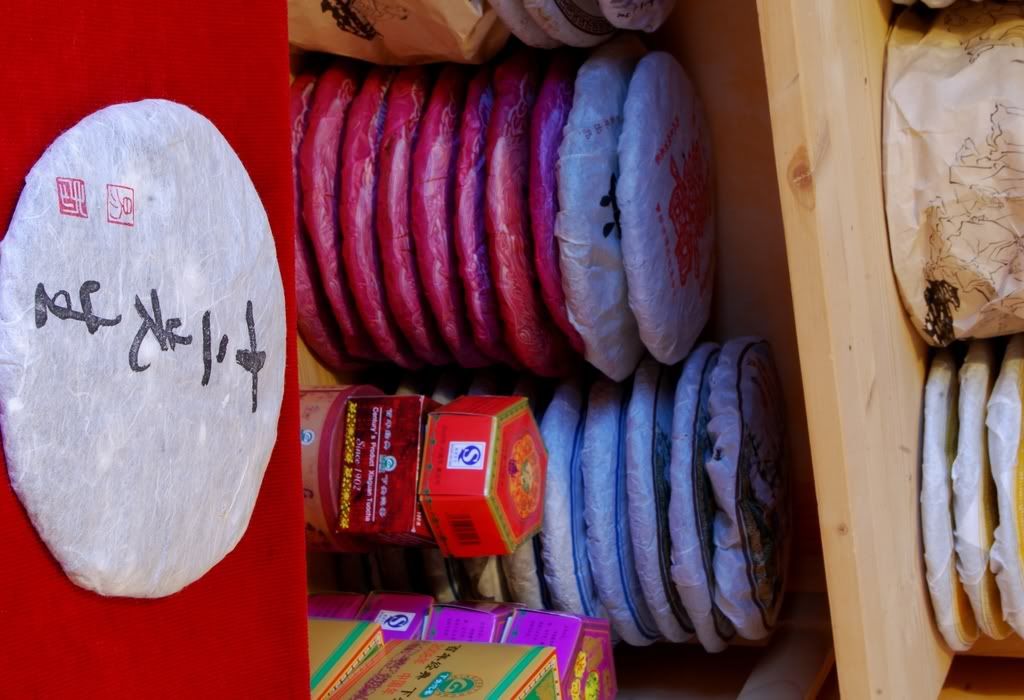
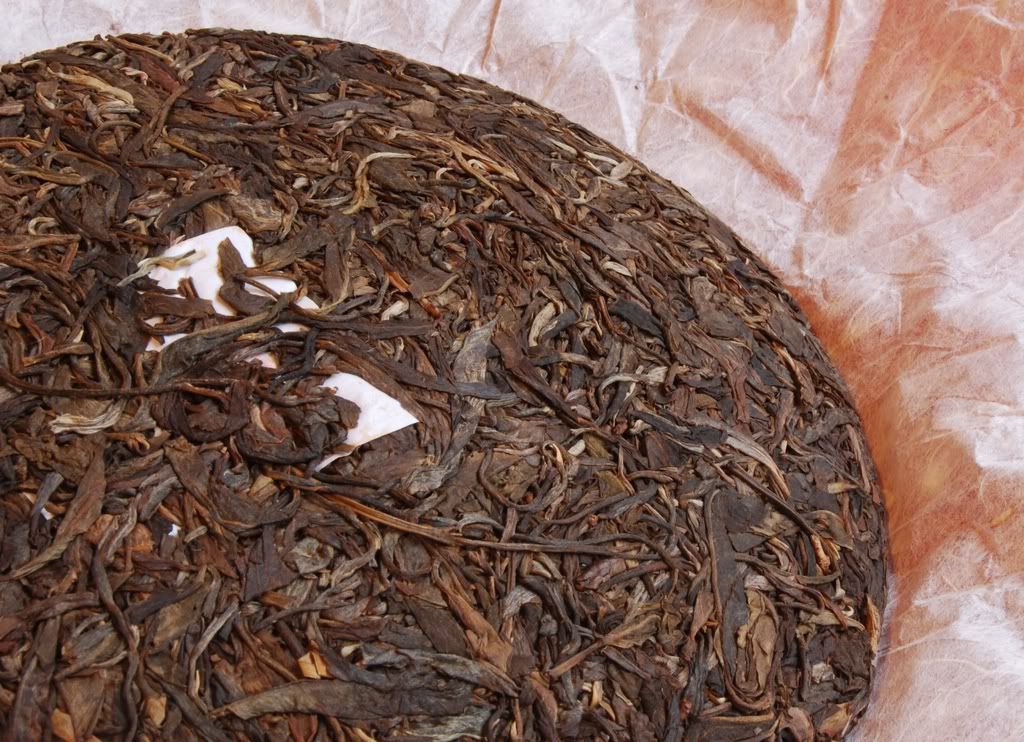
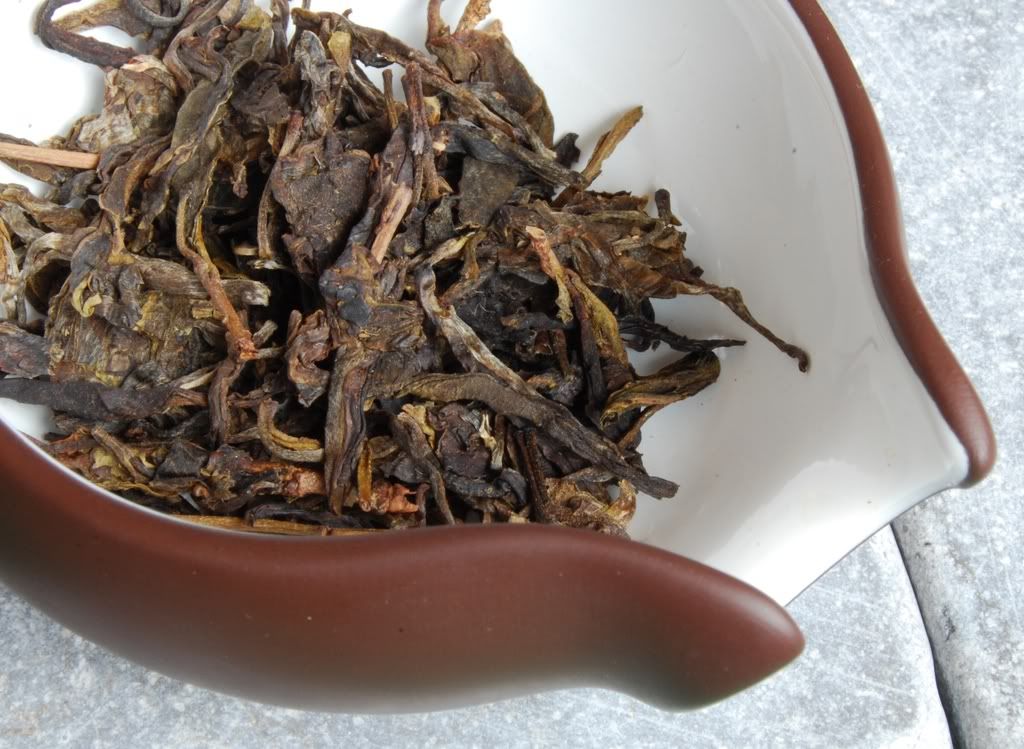
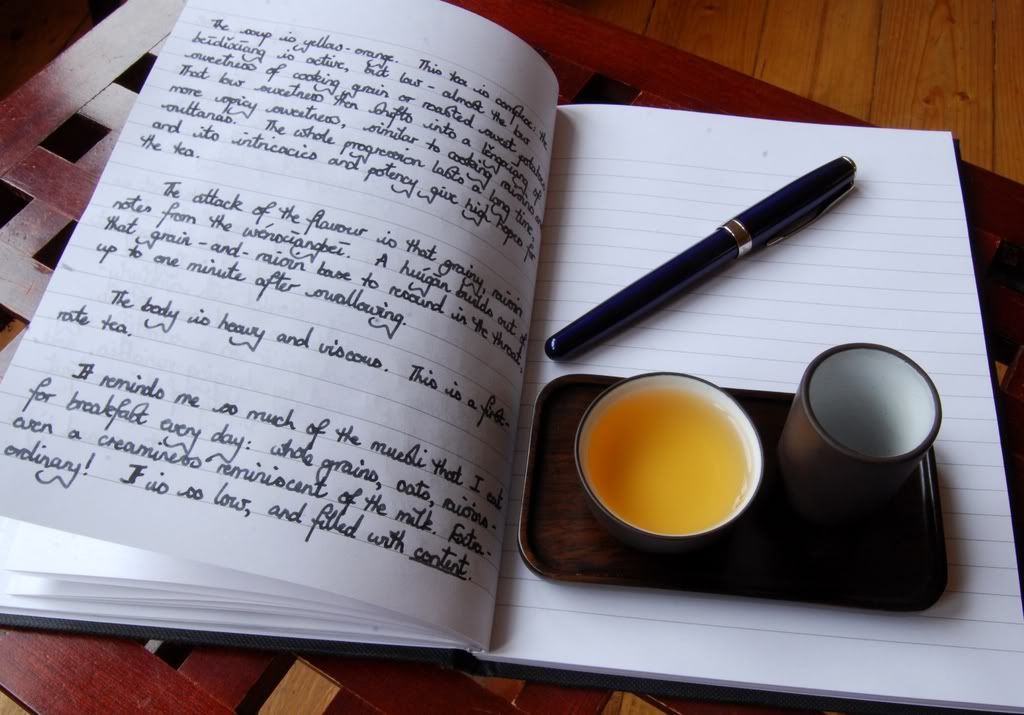
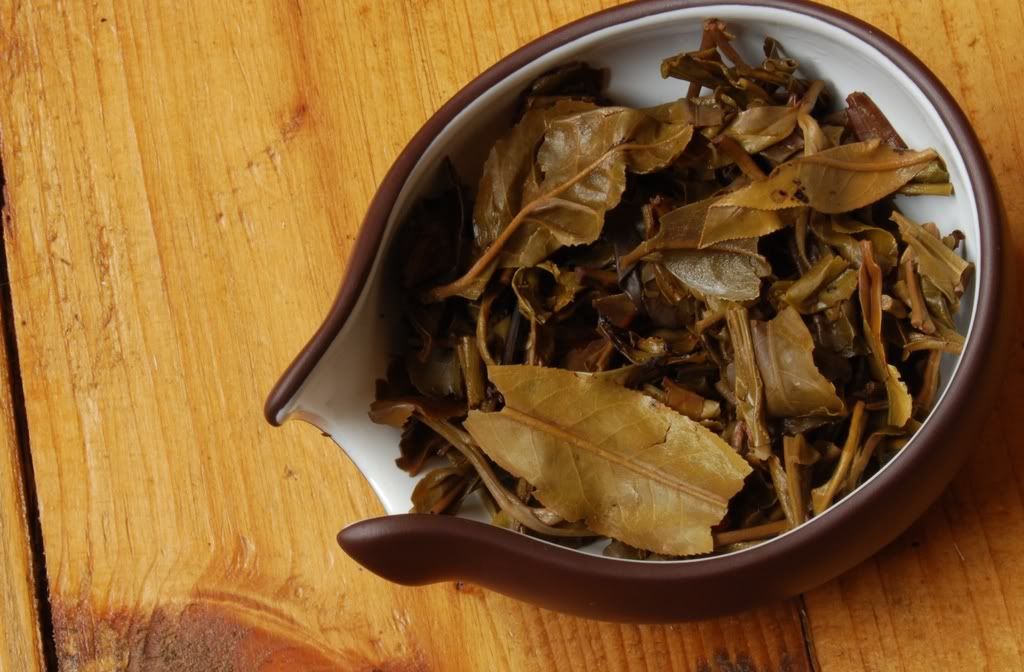
Hi Hobbes,
ReplyDeleteImpressive! 9 rounds you say? Very rare for a young sheng IMHO. Great post.
Hop
Happy New Year, Hop!
ReplyDeleteYou know, I've been doing 9 good rounds from quite a few young shengpu recently, I must be getting lucky in my selection. The 2008 Hailanghao Man'E kept developing past that, as did the 2007 Yichanghao Yiwu, and even some of the Xiaguan FT stuff. That's the kind of luck I like... ;)
Toodlepip,
Hobbes
Wow! even from Xiaguan! Boy, you must be sacrificing to the tea gods!
ReplyDeleteHi Hobbes , is this the cake that you are referring to in the comment that you posted on Marshal N's post - A clear and present danger - earlier today ? All the best! Simeon .
ReplyDeleteDear Tofu,
ReplyDeleteIt was either this one, or the 2006 Menghai, yes - strong stuff. :)
Toodlepip,
Hobbes
I assume you mean the 2007 Menghai------ hmmm I have both the 2006 Yiwu and the 2007 menghai cakes in my collection . I haven't had a session with either since 2009 - they were both quite decent then . Sounds like it's bad news for one of them now though . I shall have to dig them out , and brace my self for a session with each to see how they are coming along .
ReplyDeleteThe cake was so horrid, I must have done something wrong - perhaps the hypercompression led me to use too many leaves, if I were not paying attention. I'd certainly love to read your own comments, and will try my cake again when time permits.
ReplyDeleteToodlepip,
Hobbes
Just had a session ----- well ,started a session with some of this . Yuck ! I don't think it was quite as horrendous as your experience Hobbes . I managed to drink the first two infusions ---- which really weren't very nice so I ditched it - can't remember the last time I did that ! Luckily I had some of Nada's 2008 Ancient Tree Bulang ready to go , so I had a session with that to put myself right ! I will not be revisiting the 2006 Twelve Gentlemen Yiwu again in a hurry . Whether or not a good few years of further ageing will improve this will remain to be seen .
ReplyDeleteI'm so glad to read that it's not just me. :)
ReplyDeleteToodlepip,
Hobbes
Did five years heal this tea's wounds?
ReplyDeleteDear Shah,
ReplyDeleteIt's great to hear from you - I trust that all is well!
I'm not sure about this tea, as we've been redeveloping the house (rather substantially) such that my eldest son has been temporarily (four months!) sleeping in the tea-room. I'll try to find this cake, perhaps this coming week-end, and report back.
On the bright side, we were away for ten days over Easter and, on returning, the tea-room really smells of rich pu'ercha. It looks like everything comes to life in springtime...
With best wishes; toodlepip,
Hobbes
Wow ! What a difference just over two and a half years more aging has made ! It really was quite horrid back in August 2013 . I had more or less written this one off . Very pleased to see that we are back on track . I must dig out my own cake again some time . Hope it is doing as well as yours ! All the best ! Simeon . p.s - Did you ever get to revisit the 2009 Nadacha Bulang last year ?
ReplyDeleteDear Tofu,
ReplyDeleteDo you know, I really can't remember my thoughts on the 2009 Nadacha Bulang. I'll try to find it this week-end! I have a vague reminiscence of it being slightly improved, but that might be my imagination. Let's find out!
Toodlepip,
Hobbes
Tofu! I did not realise the danger inherent in your request. I duly found and retasted the 2009 Nadacha Bulang (linked here), and then reread my original article. The article explains my pain.
ReplyDeleteThanks again!
Toodlepip,
Hobbes